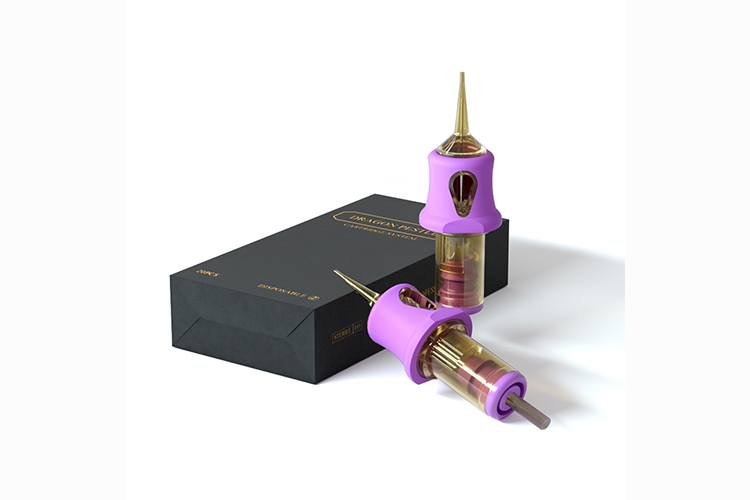The electric tattoo machine revolutionized the art of tattooing by introducing a mechanized process which allows for consistency and precision in tattoo application. Originating from the late 19th-century invention by Samuel O’Reilly, the modern machine has undergone significant changes, yet the core function remains the same; to drive needles into the skin to deposit ink with minimal damage and maximum efficiency.
A: Tattoo Machine Innovation: Coils vs. Rotary Mechanism
These machines work cleverly, using coils or a rotary mechanism. Coils move the needles through a magnetic circuit, while rotary machines use an electric motor. This progress enables artists to create intricate designs not achievable with traditional tools. Additionally, wireless machines have brought newfound ease and flexibility for tattoo artists.

II: Key Takeaways
- The electric tattoo machine has enabled consistent and precise ink application.
- Evolution of the technology has led to variants like coil and rotary machines.
- Advancements have significantly impacted the artistic possibilities of tattooing.
III: History and Evolution of Electric Tattoo Machines
The electric tattoo machine has dramatically transformed tattooing, turning it into a precise and efficient art form. From Samuel O’Reilly’s invention based on Edison’s device to the sophisticated machines used today, the journey has been marked by continuous innovation and diversification.
A:Invention and Early Models
The electric tattoo machine was created by Samuel F. O’Reilly in 1891. He modified Thomas Edison’s rotary operated stencil pen to create the first electric tattoo machine. This innovation provided a consistent power source and steady needle movement, replacing the unreliable hand-tapping technique. O’Reilly’s machine was originally designed as a duplicating device, not for tattooing.
B:Technological Advancements
Over time, the tattoo machine has seen numerous technological advancements, with inventors refining its design to improve performance and comfort. For instance, the tube and needle system provided an ink reservoir, simplifying the tattooing process. Advances in electromagnetic technology led to the development of coil machines, which offered artists greater control over the depth and speed of the needle.
C:Modern Variations
Today, artists have a range of electric tattoo machines for different styles and techniques. Rotary machines are quiet and lightweight, while coil machines offer power and adjustability. They come in customized configurations for lining, shading, and coloring, with some prioritizing comfort for long sessions. Artists constantly improve these machines for precision, efficiency, and minimizing skin trauma.
IV: Components and Functionality
An electric tattoo machine operates as a complex tool with various components that work together to create detailed tattoos. Each part plays a specific role in the machine’s overall function, from guiding the needle to controlling the power supply.
A:Machine Frame
The machine frame serves as the backbone of the tattoo machine, providing structure and stability. It holds all other components in place and is typically made from materials such as steel, aluminum, or brass for durability.
B:Electric Motor and Circuitry
The electric motor propels the machine’s moving parts, and the circuitry controls the power flow. Tattoo machines often rely on coils or rotary motors, which directly influence the machine’s speed and force.
C:Needle Assembly
The needle assembly consists of the needle bar, which attaches to needles of various configurations. This component moves up and down to puncture the skin and deposit ink, forming the tattoo design.
D:Power Supply and Foot Switch
A dependable power supply regulates the voltage to the machine, while the foot switch provides control over the power flow, allowing the artist precision while tattooing.
E:Grip and Tube
Finally, the grip is where the tattoo artist holds the machine, designed for comfort and steadiness, and the tube guides the needle assembly and provides stability during tattooing.
Frequently Asked Questions
The choice between a wired and a wireless tattoo machine depends on the artist’s personal preferences and work environment. Wired machines offer consistent power supply, whereas wireless machines provide greater mobility.
Yes, tattoo machines work with electricity. Electric motor or electromagnetic coils power these devices, driving the needles necessary for tattooing.
For beginners, rotary tattoo machines are often recommended due to their ease of use and maintenance.
Coil tattoo machines use electromagnetic circuits to move the needle, while rotary electric tattoo machines employ a motor. Coil machines are traditional and offer a hammer-like effect, while rotary machines are quieter and smoother.
Wireless tattoo machines provide enhanced portability and convenience, eliminating the restrictions of cables and making set up simpler.
Beginners are often advised to start with machines such as the Dragonhawk Atom, which is considered the best rotary tattoo machine for newcomers due to its ease of use and quality results.






